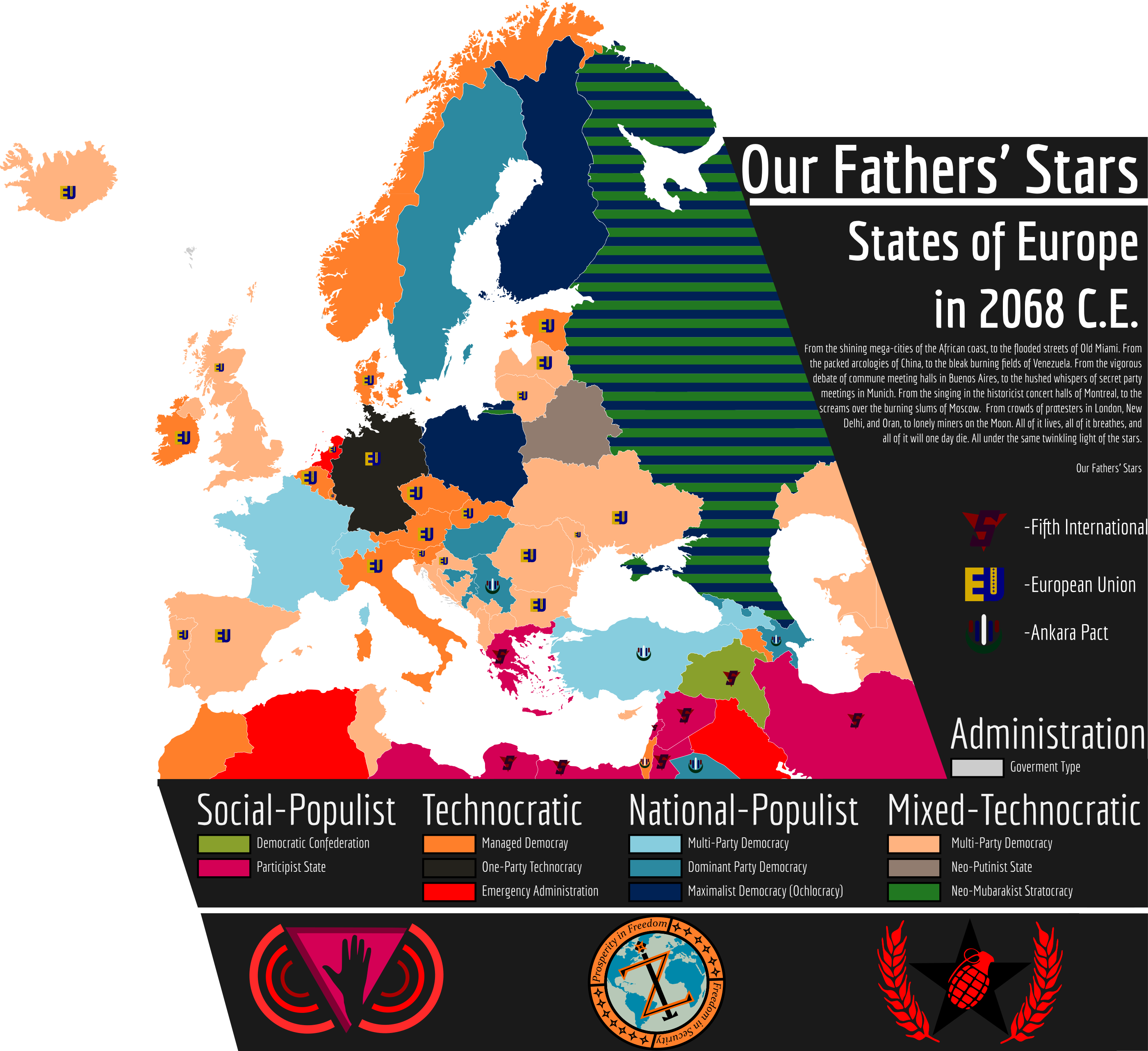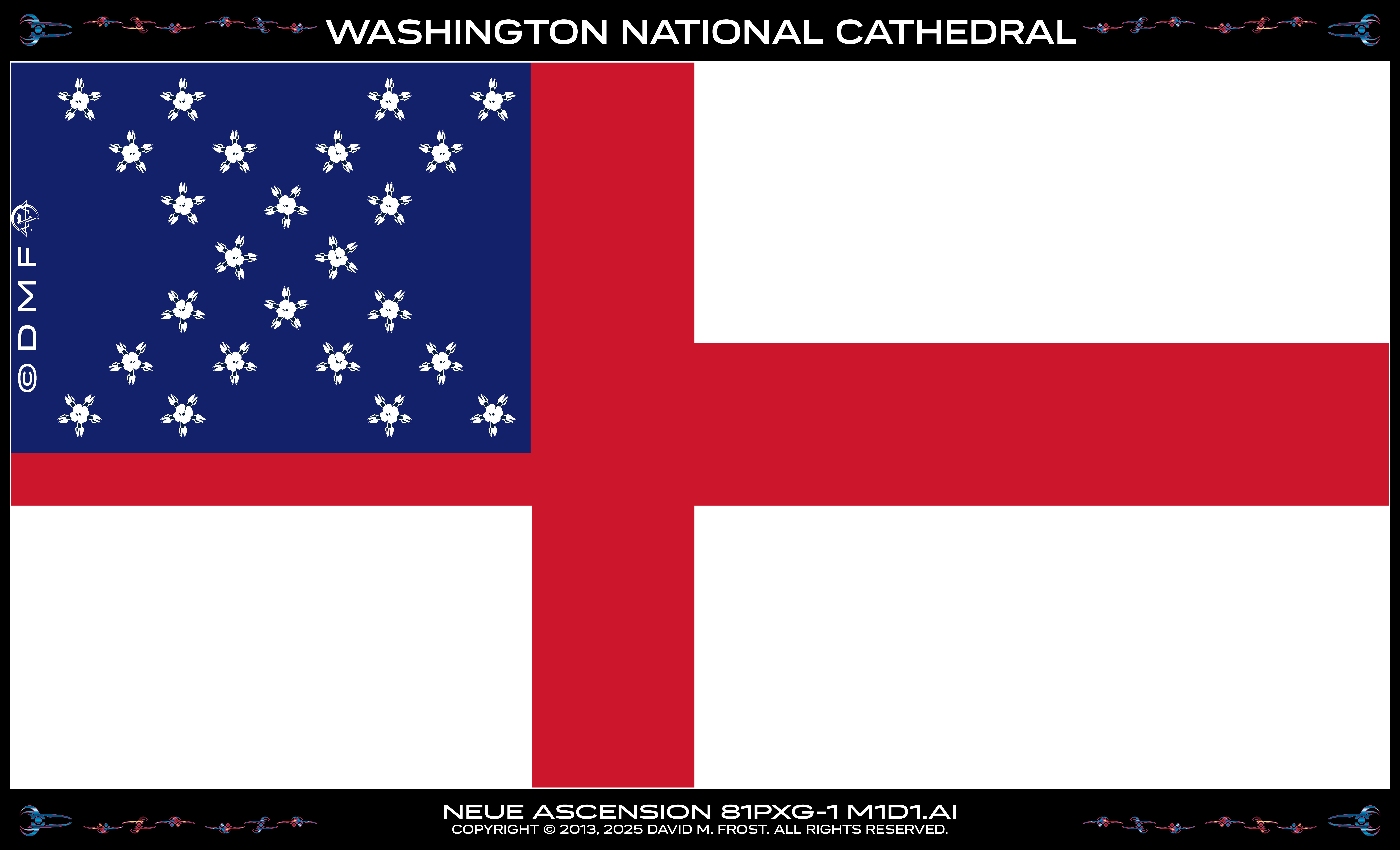HOME | DD
 machinekng — States of Europe - 2068 C.E.
machinekng — States of Europe - 2068 C.E.

#alternatehistory #cyberpunk #map #futurehistory #2068ce
Published: 2017-01-29 19:08:34 +0000 UTC; Views: 10748; Favourites: 103; Downloads: 69
Redirect to original
Description
The Long Crisis was the end of Europe's long prominence in the world. Assaulted from all sides, from populist uprisings, from terrorist attacks, from ecological catastrophe, the liberal order entrenched itself. To survive the oncoming deluge, it would be nesecary to discard the values and structures that were preventing the system from working efficiency. Democracy. Civil liberties. The Welfare State. The old liberal order was replaced by a new and ruthless post-liberal system. The Zentrum International. The EU itself became an instrument of Zentrum Hegemony. European security forces and courts operate on a pan-national level, dealing with crimes that threaten the entire union. Policy and diktat from the European Council is usually implemented, willingly or not, by its members. The common market has become the epitome of post-liberal market facilitation, with common health, energy, security and water markets connecting the European economies.That was then, in the '30s. And now things have begun to unravel. Zentrum-backed parties and dictators that were once able to effectively manage their democracies have fallen from power, and the reformists that have taken their place are not as willing to remain under the Zentrum and the EU's hegemony. Countries like France, Poland and Serbia, who rejected the idea of Europe, have begun to flex their muscles, interested in becoming regional hegemons in their own right. Radical political movements are on the rise. Municipalists in Spain, France and Scotland. Synthesis Marxists in Portugal, Italy and Iceland. National Syndicalists in the UK and in Turkey. All opposed to the present order, and all willing to reshape the world into their own vision. Terrorism is still a threat. While Islamist terrorism ended in the 20s, and Christian Remnant attacks ended in the 40s, both Black Tides cultivated waves of nationalist terror that still reverberates. From the Padanians in Italy, to the Wallonians in Belgium, to the Catalans in Spain, ethnicist terror is still a pressure, further destabilizing a precarious situation.
2068 will be a pivotal year in the history of Europe. With the general election in Italy, and early election in the UK, extremists have the chance to gain power in some of the most important countries in Europe. The 2068 Full Convention of the Fifth International in Islamabad is set to resolve both the "Iraqi" and "American" questions, and the decisions made there could throw the entire Eurasian continent into conflict.
Europe holds its breath.
--------------------------------------------------------------------
Note: Logos on the bottom, left to right.
-Logo of the New Society Party, the principal Synthesis Marxist party in Greece.
-Logo of the Zentrum International.
-Logo of the Majority Party of the Russian Nation (New National Bolsheviks).
--------------------------------------------------------------------
From the shining mega-cities of the African coast, to the flooded streets of Old Miami. From the packed arcologies of China, to the bleak burning fields of Venezuela. From the vigorous debate of commune meeting halls in Buenos Aires, to the hushed whispers of secret party meetings in Munich. From the singing in the historicist concert halls of Montreal, to the screams over the burning slums of Moscow. From crowds of protesters in London, New Delhi, and Oran, to lonely miners on the Moon. All of it lives, all of it breathes, and all of it will one day die. All under the same twinkling light of the stars.
Our Fathers' Stars.
Related content
Comments: 21

What's the difference between Democratic Confederation and Participist State?
👍: 0 ⏩: 0

I think this Our Fathers' Stars may be my new favourite timeline that's just too big for me to start getting into
👍: 0 ⏩: 1

If you look through my 2068 galleries, then you'll have most of it, and I can answer most questions that many come up.
👍: 0 ⏩: 0

How did Turkmenistan become a multi-party democracy?
👍: 0 ⏩: 0

Most simply put, Neo-Putinism is the combination of strongman populism to maintain power with technocratic administrative techniques. It was coined in reference to the activity of the United Russia party following Putin's retirement and death.
👍: 0 ⏩: 0

1. How regime the Ochlocracy works?
2. What is Mubaracism?
👍: 0 ⏩: 1

1.) Ochlocracy means "mob rule." Maximalist populism is an ideology that rejects "normative rights." In the minds of maximalists, normative systems of ethics, morality and political rights are tools of oppression, used by elites to manipulate and suppress the average man. Establishing any such normative or constitutional order, even if done from a populist perspective, would only lead to a new elite rising to power through their manipulation of the moral system. Thus, where maximalists have taken full control, they've established "total democracies." In such systems, the judiciary and civil law enforcement is abolished, replacing by militias and "mass juries," that have extensive power. The national parliament is composed of single-seat constituencies with the ability for immediate recall. In countries like Poland or the New Bolshevik controlled areas of Russia, the economy is ordered in a national syndicalist fashion, with local popular councils and unions controlling production and having their efforts coordinated by central planning bodies. Finland still has a mixed market economy, with a combination of worker-owned and private-owned businesses competing on the market.
2.) Mubarakism refers to the economy of Egypt under Mubarak, that being the military deep state's ownership of much of the economy. In Russia, outside of the areas controlled by the New Bolsheviks, the army has effectively divided the country into fiefs, with individual generals and their armies owning the vast majority of enterprises within the area.
👍: 0 ⏩: 0

In the wake of the Greater Islamic Civil War (2044 - 2049), between the the conservative Green Flags (Restore Islam) and the theodomist Red Flags (All Under Heaven), the Turkish state was stuck in a hard place. The loss of Kurdistan to independence during the Second War on Terror had been painful, but Turkey's relations with the C.I.M. bloc had been amicable enough. However, the replacement of an Islamist bloc with a Marxist one was terrifying to the Turkish government. With NATO having essentially disintegrated in the early 40s, Ankara sought to pull together an anti-Marxist defense pact from its neighbors. Serbia, still a pariah in the European community, and fortress Israel were both willing to sign on in 2052. The restored Kingdom of the Arabs and Azerbaijan also joined later, in 2055 and 2059, respectively. While the pact isn't much at the moment, the pact's diplomats have been working to get Iraqi, Algerian and Moroccan support, as well as to guarantee supplies from the EU in case of conflict.
👍: 0 ⏩: 0

Very nice map. However it kind of looks like it gets cut off prematurely on the right side.
Also what is the difference between putinism and various other forms of government with a dominant party?
👍: 0 ⏩: 1

The framing decision was mainly based around not wanting to deal with the Kazakh border in this map. I wasn't 100% on board with the hard cut myself, by I think that it lent well to the left-justified frame.
Neo-Putinism could be described as technocracy by populist means. Neo-Putinist regimes embraced post-liberal economics and administration while drawing on national-populist fervor to prop up their state. The ideology was fairly common in Eastern Europe and Central Asia between the 30s - 50s. However, with the fall of the United Russian party in Russia and the Second Black Tide, most Neo-Putinist states ended up liberalizing in face of popular pressure. This is opposed to a Managed Democracy, where the dominant party maintains a semblance of democracy while imposing technocratic administration , or a more traditional Dominant-Party Democracy, which uses populist appeals and patronage networks to supress dissent.
👍: 0 ⏩: 1

How do the multi-party democracies incorporate technocratic elements?
👍: 0 ⏩: 1

In multiple ways. For example, the UK still operates off the Technocratic 2044 constitution. While the New Party's overreach in imposing that constitution led to their swift fall from power, many of its provisions, including technocratic ministerial autonomy, is still in place. Spain is a partially technocratic democracy, usually governed by the Progress and Renovation, which has also implemented technocratic reforms. Every state in the EU has to deal with its technocratic structure, which often imparts a character on the sorts of laws and structures that are allowable within the union.
👍: 0 ⏩: 1

I have seen several mentions of the black tides throughout the series, what are they?
👍: 0 ⏩: 1

The Black Tides were upswells of radical nationalist and reactionary sentiment that swept across Europe. The first Black Tide began in the late '30s and lasted through the first half of the '40s. The first Black Tide led to the dominance of Sweden and Finland by Maximalist Populist sentiment. While this wave of sentiment seemed to die down, it bubbled up again in the early '50s with the ascension of the New Bolsheviks to power in Russia and United Poland in Poland.
Now, with the English Labour Party being able to force the British government to hold early elections, there's a definite fear that an ELP victory in the UK could spark another humanitarian crisis and inflame violence throughout the continent.
👍: 0 ⏩: 1

You mentioned in other posts that Europe suffered attacks by Christian fundamentalists. Are they considered part of the black tide or something else considering that they attacked even far-right governments?
👍: 0 ⏩: 1

The Christian Remnant movement is often casually lumped into the 1st Black Tide, but it predated the Black Tide proper by a half-decade. The first real expression of this sort of fundamentalist violence would probably by the terror campaign waged by the Sovereign Authority in the U.S. in the early '30s. While the Sovereign Authority was a loose collection of Sovereign Citizens, white nationalists and apocalyptic fundamentalists, the Authority's campaign served as a model for fundamentalist groups in Europe.
The Christian Remnant in Europe was a product of the failure of the Christian International and the technocratic backlash against right-wing populism. The Vienna Consensus was the spark, and convinced many of these fundamentalists that anti-Christian forces were now in power, and that the Tribulation had begun. The movement justified their violence by claiming that the world had entered a new dispensation, and that such terror was now acceptable to destroy servants of the anti-Christ and liberate true Christians from its grasp.
The Christian Remnant movement has mostly died down. After all, the tribulation was only supposed to be around seven years long. While there are still true believers holed up in safehouses across the continent, they aren't as major a concern.
👍: 0 ⏩: 0




























